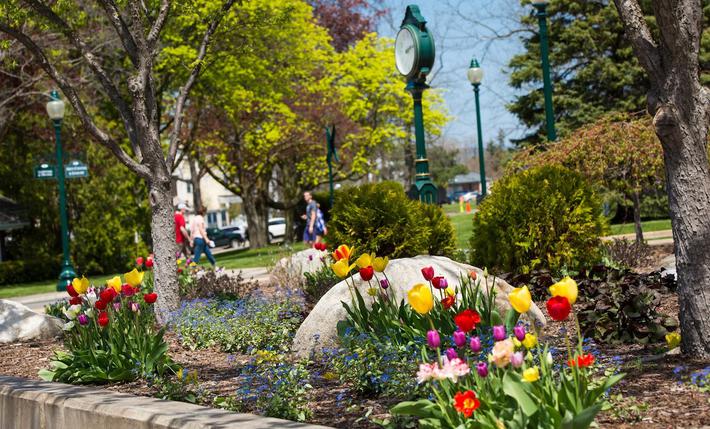Saving Your Life While Losing Your Mind
Guest Opinion
By Isiah Smith, Jr. | May 4, 2024

Everywhere we look worldwide, problems seem to be intensifying and multiplying. The war in Ukraine grinds on without an end in sight, and the situation in Gaza worsens daily. On American college campuses, it’s 1968 again, peppered as they are by student protesters and outside agitators. Politics in the U.S. are becoming meaner and grimmer, polarized along stiff ideological lines, with distrust and hatred rising between ordinary Americans of differing views and sparking threats of violence.
Just when you thought it couldn’t get any more bonkers, the U.S. Supreme Court decided it was in everyone’s best interest to legitimize the question of whether an ex-president is beyond the reach of the law because he has “absolute immunity” from the consequences of his illegal acts!
It’s enough to make one shake one’s head and ask, as Albert Einstein reportedly did, “A question that sometimes drives me hazy: am I or are the others crazy?” In my opinion, it is a bit of both!
The more pressing question is what we can do about all the insanity surrounding us. How do we turn poison into medicine?
The answer came to me on a visit to the District of Columbia (DC), improbable as it may seem because that city is the site of so much negativity, rage, and resentment. But there’s a compelling reason for the trip to DC: to enjoy the peace and contentment in the (mostly) free museums.
So, here we were in the Hirshhorn Museum and Sculpture Garden—our mission is The Weiwei exhibit. Ai Weiwei is a contemporary Chinese artist, documentarian, and activist. Instead, our attention is stolen by the mysterious and mesmerizing art of Yayoi Kusama, whose work embodies the Buddhist concepts of turning poison can into medicine.
Kusama’s art has attracted millions of art lovers worldwide, including me. Even if you don’t know the enormous price she has paid for her art, you can sense it in works such as the Infinity Mirror Room. You can feel in her work the price we all pay for the gift of life, the strength to carry on no matter what happens. Her art reflects a mind on the verge of losing itself and its grip on everyday reality. We’ve all had that feeling, haven’t we? Some of us have even heard disembodied voices echoing in our minds and wondered what to do about them.
For Kusuma, those demons and voices became the engine that powered her creativity.
When I discovered Kusama, I sensed, as I’m sure many others have felt, the presence of a kindred spirit. Still, how does one suffering from severe mental disorders that would cripple most of us become such a potent and prolific creative force?
An article by Lynne Lamberg in Psychiatric News on September 14, 2014, describes the phenomenon but fails to explain it. And Kusama’s autobiography, Infinity Net, provides the best description.
In “Artist Describes How Art Saved Her Life,” Lamberg noted how Kusama, now 94 and widely considered Japan’s greatest living artist, voluntarily moved into the Seiwa Hospital for the Mentally Ill in Tokyo in 1977.
Kusama flourished in Seiwa and continued to produce world-class art, eventually being recognized in TIME Magazine’s 2016 annual list of the world’s most influential and vital individuals. In her 2011 autobiography, Kusama wrote that she fights pain, anxiety, and fear every day. The only method she found to alleviate her illness was by continuing to create art. Kusama’s struggles began around age seven when she heard pumpkins, violets, and dogs talking to her. She often saw auras around objects and bursts of radiance along the mountainous skyline that made objects around her flash and glitter.
Instead of succumbing to these disturbing visions, Yayoi would rush home and paint or draw what she saw in her mind’s eye. Instead of allowing her hallucinations to use her, she used them to create incredible art that has attracted a huge international following. She continues to create work that delights many.
Vincent van Gogh, another troubled artist, was not as fortunate. He died alone in Auvers-sur-Oise, France, in 1890; he was only 37. Perhaps he would have continued to create if he had realized that his creative outpouring was both cause and effect. Kusama has lived 57 years longer than Van Gogh, and her life is a masterclass on the secret to living a productive life and doing so despite harmful elements in our existence that adversely impact our mental, emotional, and psychological well-being.
We live in troubled times (the clinical term is “crazy”). Our economic and political system, once the world’s envy, is under sustained attack—from within! Our “leaders” flaunt the law they swore to uphold.
Our greatest challenge today is finding ways to turn our poison into medicine. Like Kusama, we must find creative solutions to alleviate our fears and frustrations.
Isiah Smith, Jr. is a retired government attorney.
Trending

Lakeside Weekend Adventures
The little lakeside corner of the world made up of Bay Harbor, Petoskey, Walloon Lake, and Harbor Springs is always full o... Read More >>
What to Do This Memorial Day Weekend, from Parades to BBQs to Concerts
Memorial Day Weekend, a time to honor and remember those who have served and fallen in the United States Armed Forces, has... Read More >>
A Birder's Paradise
The Beaver Island Birding Trail celebrates its annual Birding Foray May 24-26. The weekend consists of multiple field trip... Read More >>


